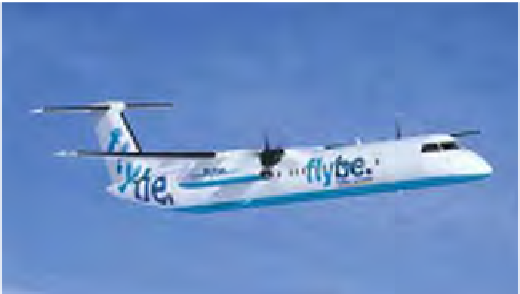Travel Reference
In-Depth Information
airlines have signifi cantly changed where passengers
fl y from in the UK and the destinations they choose
in continental Europe. There has been a steady shift
towards using regional airports, with many more
passengers travelling from their local airport. This has
resulted in a dramatic increase in the range and number
of scheduled routes available from UK regional airports
to European destinations.
The growth of new destinations in Europe is having an
adverse effect on the popularity of long-established
holiday areas. Traditional coastal resort destinations in
countries such as Spain are losing visitors to developing
destinations in Central and Eastern Europe. A number
of European countries experienced substantial falls in
visits from UK residents in 2009. In percentage terms,
the biggest losers were Sweden, Portugal and Bulgaria
(each down 29%) and Malta (down 28%). In absolute
terms the biggest falls in visits were experienced by
Spain (down 2.2 million), France (down 1.1 million), Italy
(down 0.76 million) and Portugal (down 0.72 million).
This is due in part to the demand from holidaymakers
for somewhere new to explore and the accessibility of
newer destinations using the low-cost airlines. Also,
the quality of the accommodation and tourist facilities
in some traditional resort areas no longer meets the
standards demanded by today's tourists. Furthermore,
the impact of adverse publicity in the UK press has
led to the decline in popularity of some destinations,
e.g. rowdiness amongst young people in resorts such
as Falaraki, Kavos and Magaluf. Unfavourable rates of
exchange also contribute to the declining popularity of
destinations.
l ybe is one of Europe's most popular low-cost airlines
New destinations
Mainly due to the growth of low-cost airlines, new tourist
destinations have developed right across Europe. In
the period since 2005, the countries that have seen
the biggest average annual increases in numbers of UK
visitors are Poland (+25% per year), Lithuania (+15.8%),
Romania (+12%) and Slovakia (+10.5%). The former
Yugoslavia has also been rediscovered by UK visitors,
attracted by its superb coastline and mountain scenery.
The growth of low-cost airlines has also been a factor
in encouraging British people to buy second homes
abroad, in countries such as France, Spain, Italy and
(more recently) Bulgaria, Slovakia, Croatia, Hungary
and the Czech Republic.
Political factors
A country's membership of the European Union brings
with it investment in new facilities and infrastructure,
including tourism developments such as new hotels
and visitor attractions. Countries in Eastern Europe
that have recently joined the EU have seen marked
increases in visitor numbers from the UK, for example
to Poland, Lithuania, Romania and Slovakia. Whether
a country has the Euro as its currency, and is therefore
part of the Eurozone, also has an impact on visitor
numbers at different times. As an example, if the Euro/£
exchange rate changes from 2 Euros to 1.5 Euros to
the pound it will be more expensive for visitors from
the UK to visit Eurozone countries, such as Spain and
France. Some European countries levy tourist taxes, for
example in restaurants and hotels. These can have a
negative impact on visitor numbers, as can any taxes
imposed on travel services, such as airline taxes. Many
UK airlines believe that the current air passenger duty
(APD) levied on travellers is reducing demand for air
travel.
Activity 7.12
Choose a developing destination from one of the
following countries in Europe - Poland, Lithuania,
Romania and Slovakia - and carry out some research
to discover the reasons for its growing popularity
with British visitors.
This activity is designed to provide evidence for P4.









































































































































